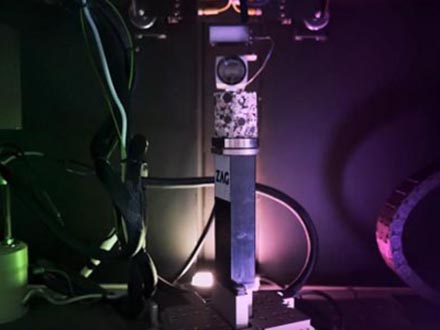 V Laboratory for Stone, Aggregates and Recycled Materialswhich operates in ZAG’s largest department, Department for Materials, we are offering a position for a Resarch Assistant with Doctorate. Research areas covered in the open position include 3D X-ray imaging, battery technology, materials science, quantitative image processing and analysis.
V Laboratory for Stone, Aggregates and Recycled Materialswhich operates in ZAG’s largest department, Department for Materials, we are offering a position for a Resarch Assistant with Doctorate. Research areas covered in the open position include 3D X-ray imaging, battery technology, materials science, quantitative image processing and analysis.
Job description
The 3D Imaging Center at ZAG is a state-of-the-art X-ray microscopy laboratory addressing research questions in geosciences, biomaterial studies, and advanced materials science. The laboratory provides two high-resolution computed tomography (CT) instruments allowing to work up to few hundreds of nanometers to apply static and dynamic X-ray imaging techniques in absorption and phase-contrast modalities. A fully devoted powerful computational laboratory is available. The center is manged by a dynamic and higly-skilled multidisciplinary team.
Efficient and long-duration stationary energy storage with Lithium-ion batteries plays a key role in the transition towards a carbon-neutral economy within the booming increase of electrical vehicle market. A new generation of Zn batteries is offering sustainable, cheaper and safer technological alternative. At our institute a proposal has been recently approved for funding through an EIT Raw Materials European project. ZAG is the coordinator of the two-years project, starting on January 1, 2024, and having as main aim the design, optimization and implementation of new generation of rechargeable Zn-based batteries. Several other institutions are involved in the project constituting a Consortium of academic and industrial partners fully covering the different technical and managerial aspects of the project idea.
The aim of this post-doctoral work is to develop a method for detecting and quantifying local information (microstructural evolution, degradation, etc.) in battery components during static (3D) and dynamic (4D) electrochemical cycling experiments under advanced laboratory X-ray microtomography.
The tests carried out as part of this project will provide in situ images of new-generation rechargeable Zn-based batteries under cycling of charge and discharge. Quantifying the 4D evolution of the electrodes microstructure and electrolite contact will be a new advance in the field. In collaboration with the Partner institutions, these measurements will be coupled with conventional electrochemical testing and spectrochemical analyses as well as mathematical modelling will be developed in order to represent the electrodes behaviour and the interaction with electrolite and eventual chemical additives, enabling us to test different chemical environments and cycling models. The results will enable us to gain a better understanding of Zn-organic batteries life cycles for different working conditions and on different spatial scales, and to use mathematical models to optimize the design of batteries and their performances.
Further information may be obtained from Lucia Mancini on 00386 70 495 598 or by email lucia.mancini@zag.si.
The job is funded through the EU Research Framework Programme EIT Raw Materials (Capacity building projects, KAVA call 9).

